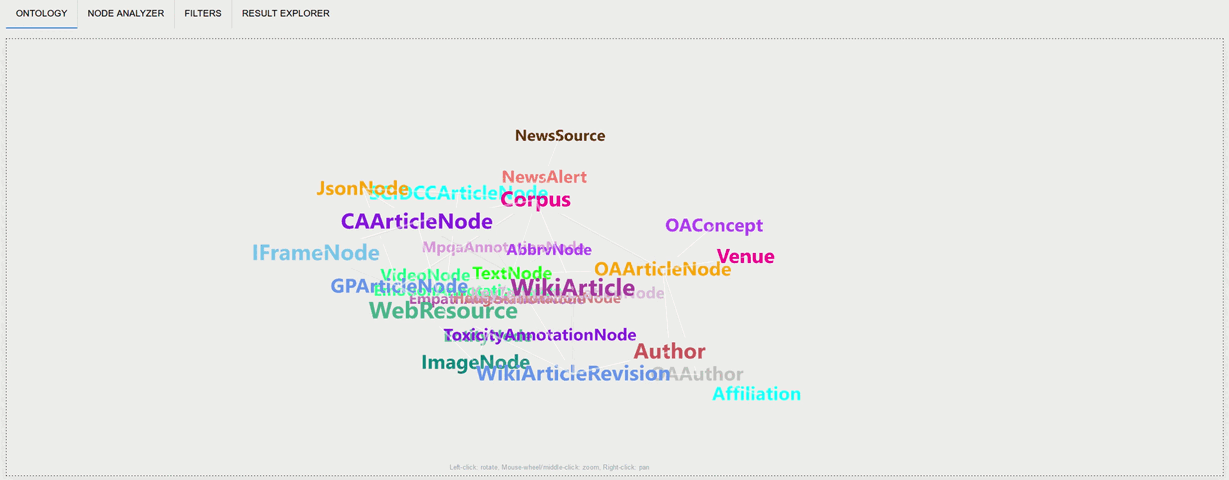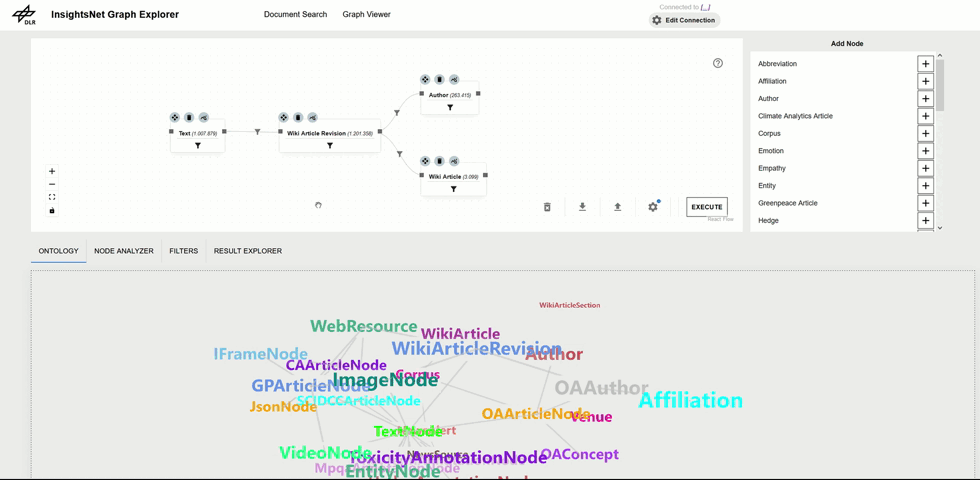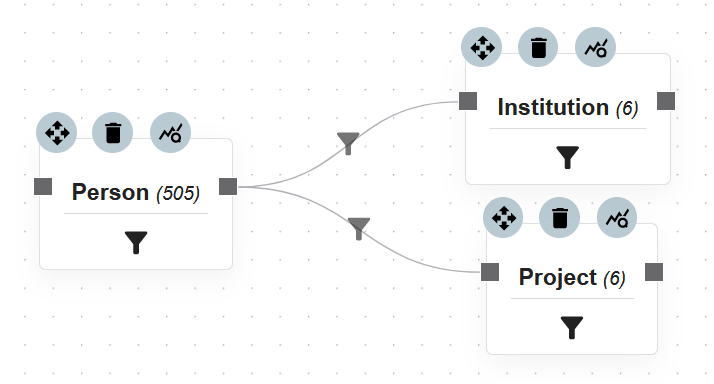Welcome to GraphDetective
This repository provides the code for our Demonstration Paper "Graph Detective - Comprehensive User Interface for Intuitive Graph Exploration and Analysis", submitted to EACL2024. Video of system demonstration can be found on YouTube.
Graph databases are used across several domains due to the intuitive structure of graphs. Yet, querying such graphs requires database experts’ involvement, reducing accessibility to non-experts. To address this issue, we present GraphDetective, a web interface that offers an intuitive entry point for graph data exploration, where users can effortlessly create queries visually, eliminating the need for expertise in query writing. After processing, the resulting graph data is then rendered in an interactive 3D visualization.
UI Interface
Ontology View
Query Graph Visualization
Defining a QGV
Applying node filters
Query Graph Result
Navigating a graph result
Display Modes
Individual Node Expansion
Installation
The application is divided into Frontend and Backend. They communicate via HTTPS and need to be installed and run individually. Furthermore, a ArangoDB database must be available.
Database
GraphDetective needs a graph on an ArangoDB database. In order to make this graph accessible to GraphDetective, please follow the steps defined in Section Backend.
Frontend
The frontend runs on React. To install all modules and run the app, execute the following commands from within the folder ./graph_detective/frontend/:
npm install --legacy-peer-depsnpm start
from the same folder. Alternatively, a docker file is included to install and run the frontend using
docker build -f Dockerfile.client -t graph_detective_frontend.docker run -d -p 3000:3000 graph_detective_frontend
Backend
Installation
The backend runs on Flask. To install all libraries and run the app, use pip to execute the following commands from within the folder ./graph_detective/backend/:
pip install -r ./requirements.txt
Feel free to use your own package manager. Alternatively, a docker file is included to install and run the backend using
docker build -f Dockerfile.api -t graph_detective_backend .docker run -d -p 16001:16001 graph_detective_backend
Database Configuration
The backend requires a total of four additional, distinct configuration files in the ./graph_detective/backend/config/ folder. Templates are already inclufed in the folder
config.json: This is the main configuration for the database connection. It is a JSON file containint the following key/value pairs:
{
"DB_HOST":"<url>",
"DB_PORT":"<port>",
"DB_NAME":"<database name>",
"DB_USER":"<user login>",
"DB_PASSWORD":"<user password>",
"DB_GRAPH":"<graph name>",
"DB_LABEL_ATTRIBUTE":"<default label to display in the graph. If unsure, use '_id' or '_key'"
}
collection_map.json: This file contains all collections, that should be displayed in the user interface. It further defines the display name for each collection. Example:
{
"WikipediaArticle":"Wikipedia Article",
"person":"Person",
"sOmE_ColLeCtInOn":"Give it any name you want"
...
}
collection_views.json: This file defines any views that might be specified for any collection. Please besure to include all collections, that are specified in collection_map.json and provide an empty string if no view exists. Example:
{
"WikipediaArticle":"Wiki_View",
"person":"person_view",
"sOmE_ColLeCtInOn":""(no view available - add empty string)
...
}
edges.json: Finally, you need to provide all edges that you would like to display and use in the graph. Any edge that is not defined here will not be usable or displayed in the graph. The format is as follows: keys represent the source collections, values are lists of target collections. This means, that each collection (...that has an edge) should be present in as a key exactly once. You do not need to provide the name of the edge. Example:
{
"WikipediaArticle":["Person"],
"person":["sOmE_ColLeCtInOn"],
"sOmE_ColLeCtInOn":["Person", "sOmE_ColLeCtInOn"]
...
}
Basic Usage
Define a QGV
A Query Graph Visualization is a visual graph structure that you want to query from the database. To define it, add collections onto the respective canvas area on the top and connect them as desired. Then hit execute.
Depending on the query, execution can be instant or take a while. Once done, the resulting graph is displayed in the visualization area below. Interact with the graph through panning, zooming, dragging and clicking.













